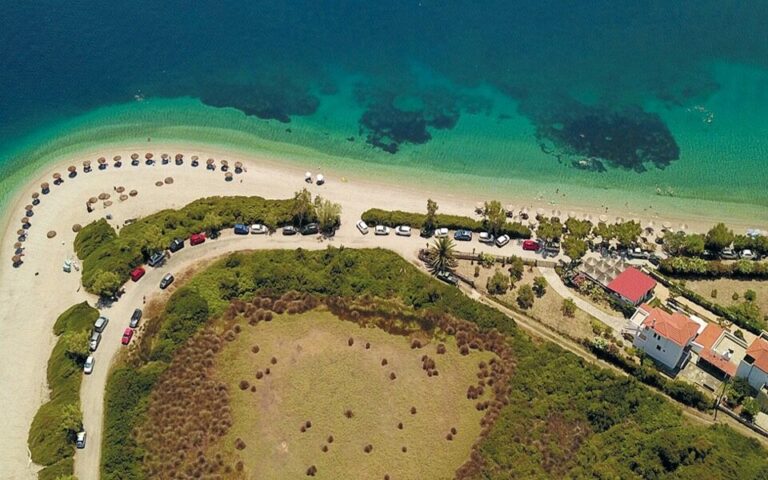Tourism holds absolute sway in Greece’s zoning plan, with few restrictions imposed, as seen in the new Special Tourism Zoning Plan document, which went up for public hearing on Wednesday.
The main feature of this framework is the promotion of mass tourist establishments (tourist villages with hotels and villas), which are allowed essentially everywhere, even in protected areas and uninhabited islands. In particular, in oversaturated tourist destinations, no real restrictions are foreseen for the creation of new tourist establishments, apart from the type of beds (only 4 or 5 stars), and the quotas that existed for mass tourist establishments on islands have disappeared.
Although this is the third draft by the Ministry of Environment and the Ministry of Tourism in a row, it is effectively the first, as the previous two frameworks (2009 and 2013) were annulled by the State Council.
The new framework divides Greek regions into five tiers according to their tourism development. This classification is based solely on the ratio of tourist overnight stays to the permanent population, i.e. it does not take into account short-term rentals, and is also done at the municipal level (1,034), with 18 saturated areas (“managed areas”), 84 developed areas, 139 under development, 265 areas with development potential and 528 undeveloped areas.
Large-scale tourism development is encouraged, while “organized resorts” are banned only on rocky islets or uninhabited islands close to the sea. The new framework does not set limits on installation or allocation anywhere, but only divides into “normal” and “soft” resorts, with the latter’s construction rate being half that of the original (but still high) one.
Despite growing concerns about overtourism, the framework does not seem to take it into account, with new four- and five-star hotels being allowed to be built, given more space, even in places designated as restricted areas.
Moreover, only a few areas can be characterized as saturated: in the Cyclades only Mykonos and Santorini, and two small areas, Syros and Tinos, while Paros, Antiparos and Ano Koufonisi are not saturated.

